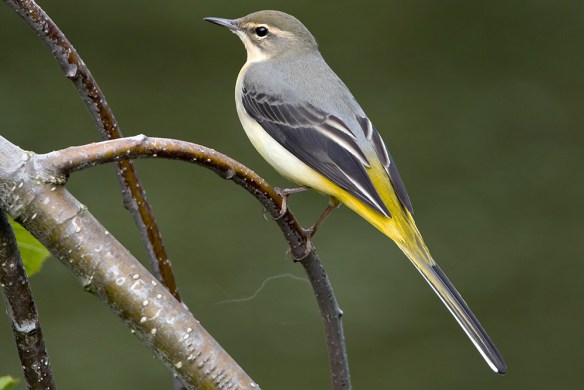 From Rare Bird Alert
From Rare Bird Alert
A parasitic disease is responsible for the severe declines seen in both UK greenfinch and chaffinch populations, say scientists in a new study undertaken by the British Trust for Ornithology (BTO) and the Zoological Society of London (ZSL)’s Institute of Zoology (IoZ).
Chaffinch numbers dropped by 29% in the UK between 2008 and 2018, with a loss of 67% of the country’s greenfinches over the same period. As a result, greenfinch was moved on to the UK Red List in the most recent Birds of Conservation Concern assessment, published last year.
This new study used large-scale citizen science data and reveals that both species have declined in ways consistent with the impact of trichomonosis, a disease that was first detected in UK finches in 2005. Earlier work by the same organisations demonstrated that the disease had driven the decline in greenfinch populations – but the cause of the chaffinch’s decline, which began several years later, was unknown before now.
Scientists looked at patterns of change in greenfinch and chaffinch populations since the emergence of trichomonosis. They found that the declines were driven by a reduction in the survival of adult birds, a pattern that corresponds with the high levels of disease observed. A shift in recent years has seen trichomonosis diagnosed most often in chaffinches – previously it was diagnosed most often in greenfinches. This led the researchers to conclude that it was probably behind that species’ decline, too.
The joint BTO/IoZ study showed that survival rates of greenfinches and chaffinches were lowest in human-associated habitats. Disease transmission may be higher in these environments, where birds congregate at garden feeders. Trichomonosis makes swallowing difficult and can cause birds to regurgitate food, contaminating shared sources of food and water with their saliva.
Following best practice advice for feeding garden birds is recommended as a way to reduce the spread of disease. This includes regularly cleaning feeders and bird baths and, if possible, rotating the position of feeders around the garden to avoid build-up of food waste in one area. If sick birds are seen, temporarily suspending feeding will allow birds to disperse and may reduce the risk of transmission.
Other UK Red- and Amber-listed species, including house sparrow and bullfinch, are also susceptible to trichomonosis. Understanding the potential for the disease to spread to other species at bird feeding stations and working out how we can feed birds more safely are also priorities.
Anyone can help us learn more about the diseases that affect garden birds by reporting sightings of sick or dead birds to the Garden Wildlife Health project, where you can also find best practice advice on feeding garden birds to help safeguard their health and welfare.
Dr Hugh Hanmer, BTO Research Ecologist and lead author on the paper, said: ‘Information derived from organised citizen science surveys has been vital to understanding what is happening to the populations of these two common bird species.
The results from our study put a spotlight on the use of supplementary bird feeding, both in gardens and as a conservation management tool, highlighting the importance of balancing the trade-offs between the positive conservation and engagement benefits of feeding with potential negatives of disease transmission that need to be better addressed.’
Dr Becki Lawson, ZSL IoZ co-author on the paper, said: ‘The emergence of trichomonosis in 2005 and dramatic declines of finches that have since occurred highlight the importance of understanding threats that affect the health of our garden birds and how disease can negatively affect biodiversity. We appeal to the public to continue to help us learn more about the conditions that affect garden birds, by reporting signs of ill health in garden wildlife to www.gardenwildlifehealth.org.’
Paper Habitat-use influences severe disease-mediated population declines in two of the most common garden bird species in Great Britain here












